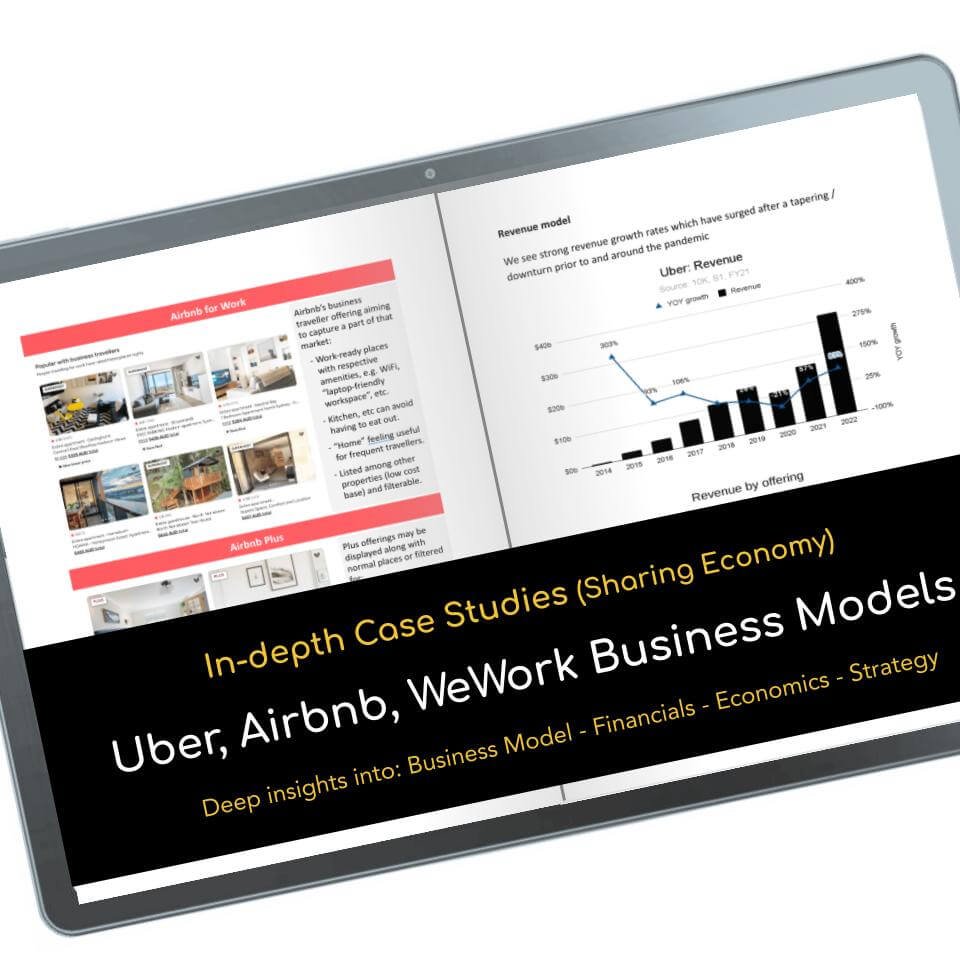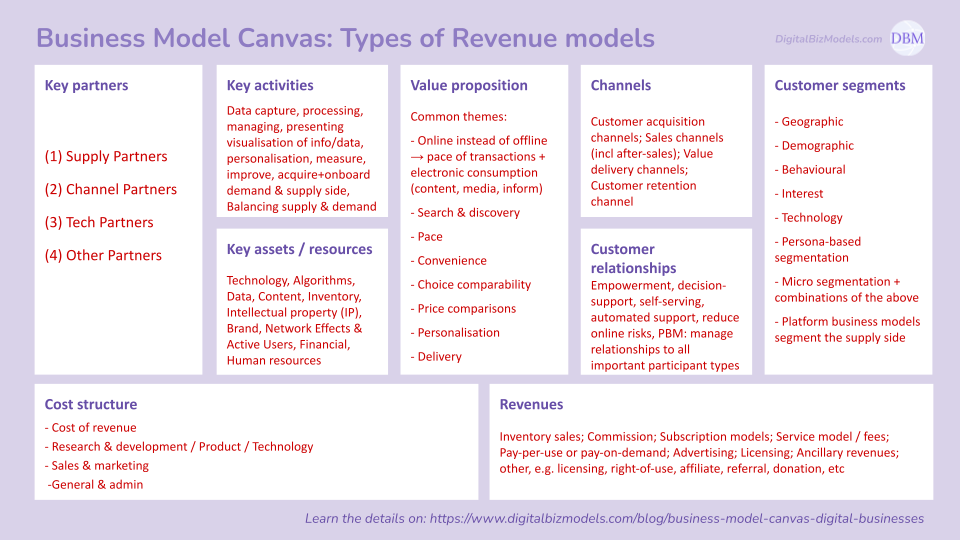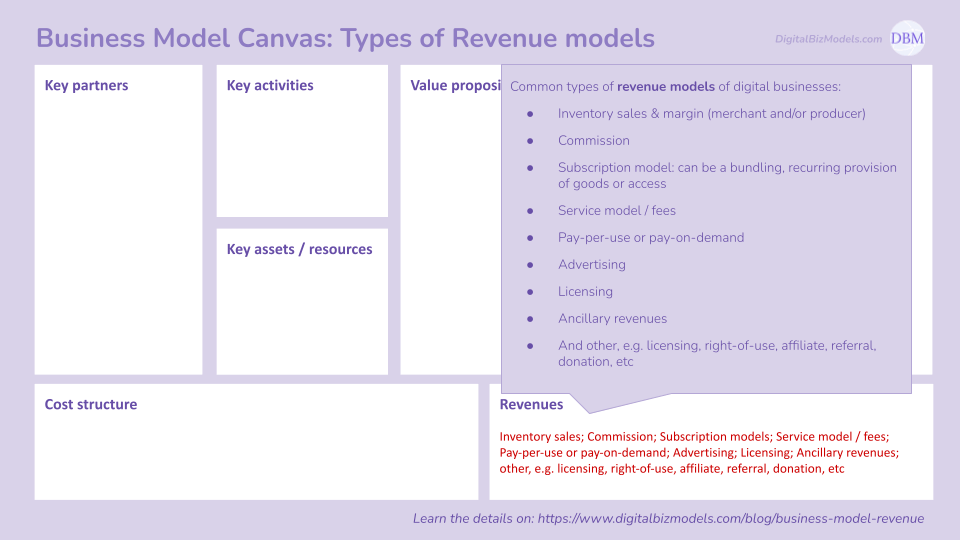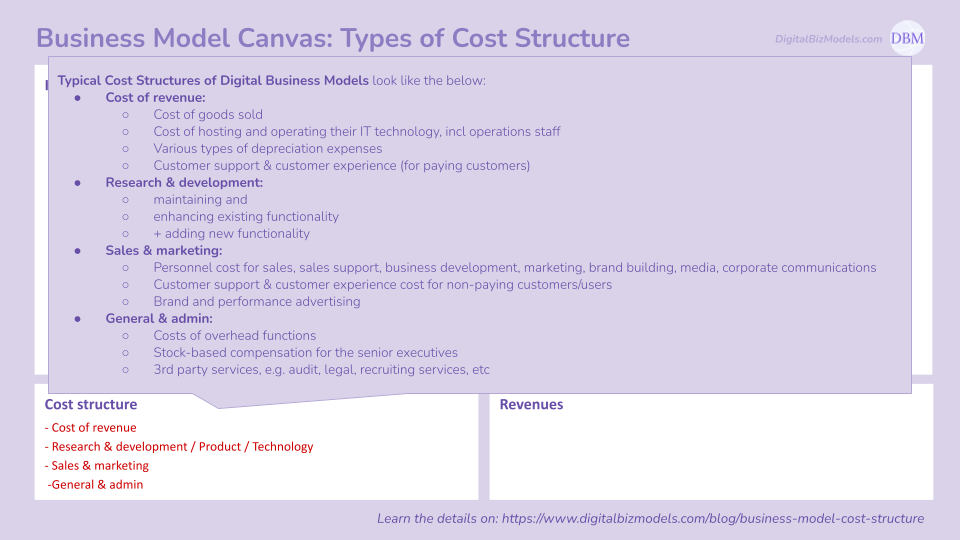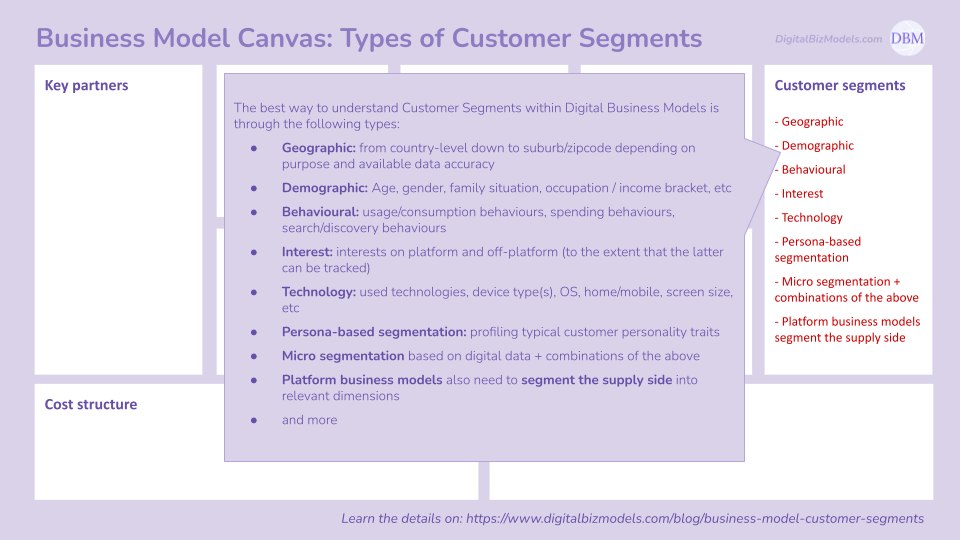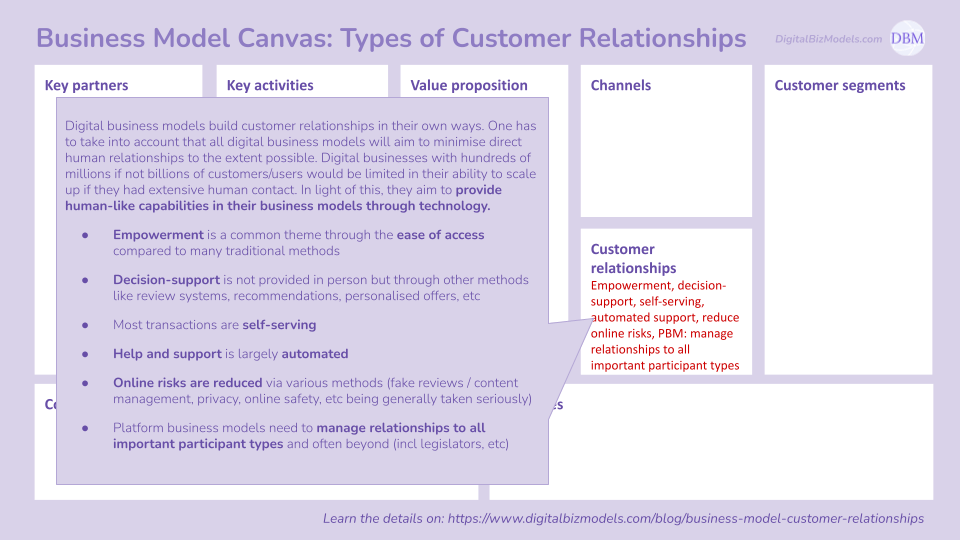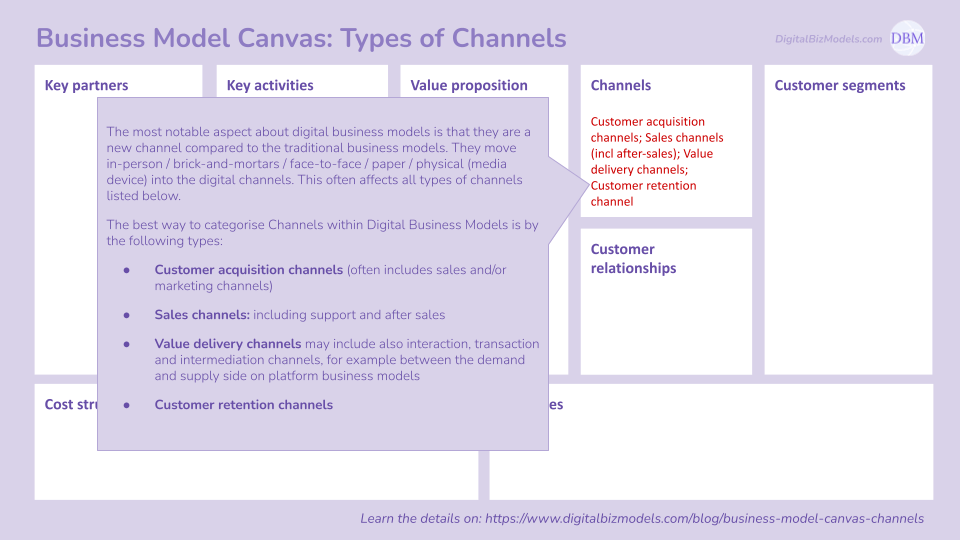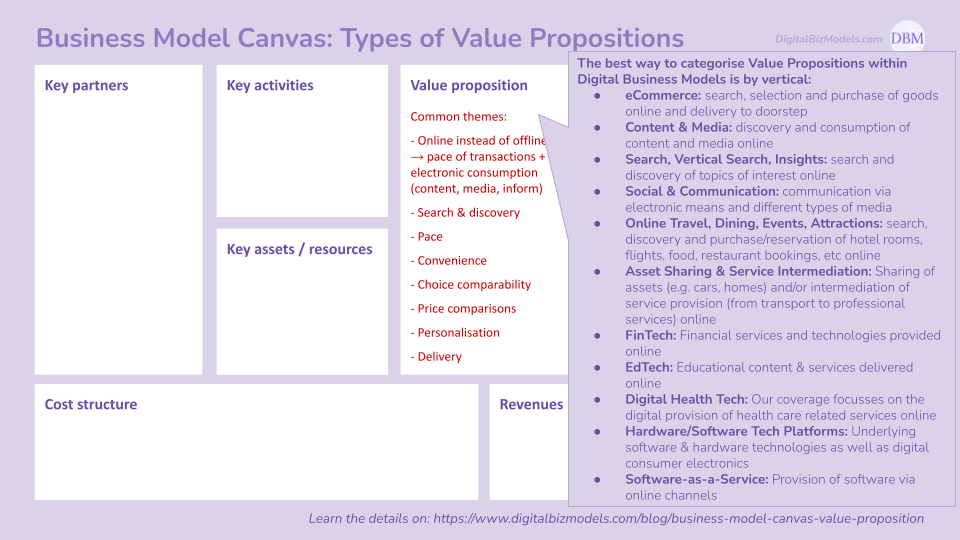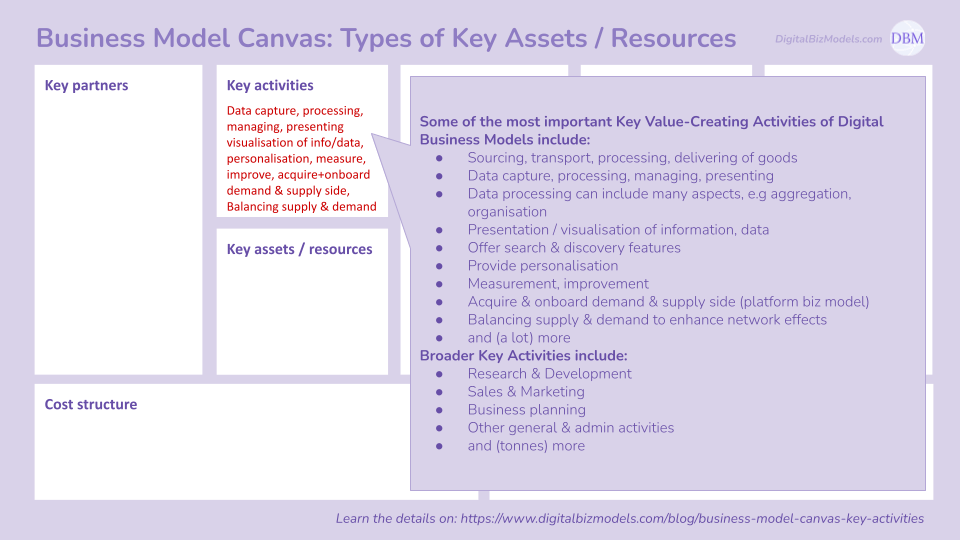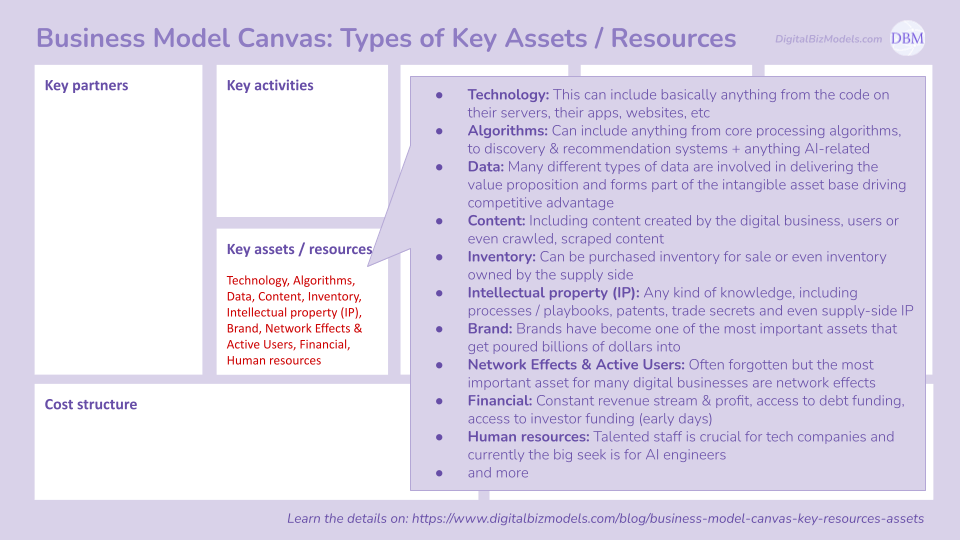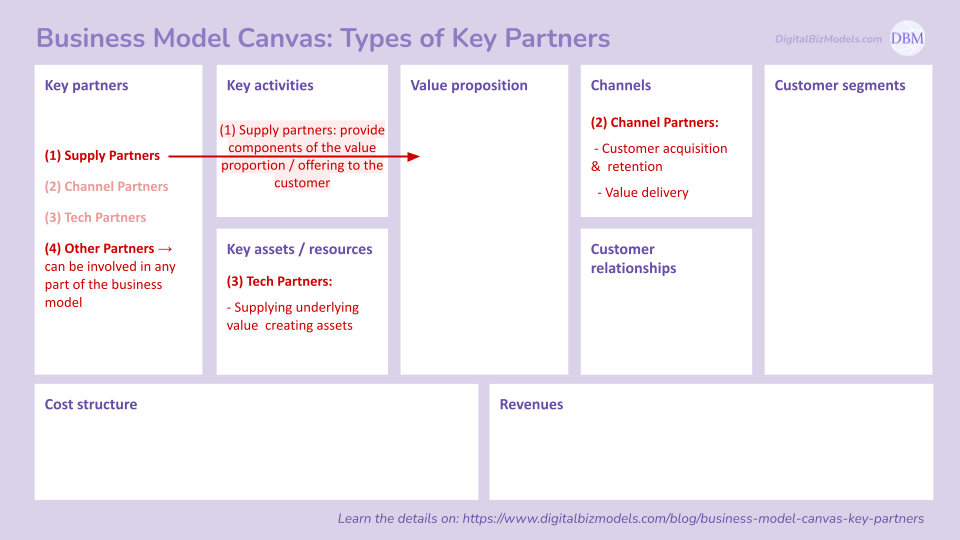Business Model Canvas - Key Assets
This article will cover the various types of Key Assets / Resources tailored to digital business models.
Key Assets / Resources are one of the sections of the popular Business Model Canvas tool.
The Business Model Canvas was devised by Alex Osterwalder
Types of key assets / resources within digital business models shown in the biz model canvas
(1) Types of Key Assets & Resources
Some of the most important Key Assets & Resources for Digital Business Models are:
Technology: This can include basically anything from the code on their servers, their apps, websites, etc
Algorithms: Can include anything from core processing algorithms, to discovery & recommendation systems + anything AI-related
Data: Many different types of data are involved in delivering the value proposition and forms part of the intangible asset base driving competitive advantage
Content: Including content created by the digital business, users or even crawled, scraped content
Inventory: Can be purchased inventory for sale or even inventory owned by the supply side
Intellectual property (IP): Any kind of knowledge, including processes / playbooks, patents, trade secrets and even supply-side IP
Brand: Brands have become one of the most important assets that get poured billions of dollars into
Network Effects & Active Users: Often forgotten but the most important asset for many digital businesses are network effects
Financial: Constant revenue stream & profit, access to debt funding, access to investor funding (early days)
Human resources: Talented staff is crucial for tech companies and currently the big seek is for AI engineers
and more
Course
Digital Business Models
11 Verticals of Disruption
The only online course that systematically covers the major types of digital business models, revealing 200 Playbook Tactics and 70 Monetisation Tactics all presented in the Business Model Canvas
(2) Examples of Key Assets & Resources
Now let’s take a look at examples of key assets & resources. The best way to do so is by looking at concrete, vertical-specific examples.
eCommerce
Examples of digital businesses in the eCommerce vertical include Amazon, Etsy, Wayfair and thousands of others.
Key assets / resources examples Amazon:
Technology:
Fulfilment / delivery infrastructure
Data centres
Websites, Apps and the backend thereof
Algorithms:
Recommendation algorithms
Pricing algorithms
Data:
User data
Purchase data
Browsing data, etc
Content:
User-generated reviews
Product photos, etc
Inventory:
Purchased inventory / goods
Note how Etsy calls their sellers’ goods “The foundation of Etsy.com’s competitive advantage is our sellers’ collection of millions of unique items”. The importance of this asset won’t get any clearer than this
Intellectual property (IP):
Patents involving warehousing, fulfilment and delivery
Website elements: 1-click buy and others
Trade secrets involved in AWS
Brand:
Amazon synonymous with eCommerce
Network Effects & Active Users:
Active users / buyers enable scaling the delivery infrastructure leading to competitive advantage
Network effects among 3rd party sellers & buyers
Content & Media
Examples of digital businesses in the Content & Media vertical include Netflix, YouTube, Spotify, Medium, Apple News and many more:
Key assets / resources examples Netflix:
Technology:
AWS-hosted software
Websites, Apps
Movie production technology & assets
Algorithms:
Discovery engine & recommendation algorithms
Production-algorithms (image, sound processing, etc)
Data:
User viewing data, incl history
User liking/disliking data
Aggregated viewing, liking data
Content:
Netflix-created movies/shows
Licensed movies/shows
Purchased movies/shows
Inventory:
Movies & shows (see content)
Sharing economy
Examples of digital businesses in the Asset & Service Sharing (=Sharing Economy) vertical include Uber, DoorDash, Airbnb among others:
Key assets / resources examples Uber:
Technology:
User App, Driver App, Uber Eats App, Uber Eats App for restaurants, Uber Eats Manager App
Marketplace technologies, payment technologies
Algorithms:
Routing algorithms
(Surge) Pricing algorithms
Data:
Uber & driver data (profile, behavioural, etc)
Aggregated data on demand
Inventory:
Drivers & their cars and the actual supply hours thereof
Restaurant menus
Shopping catalogues (Uber Delivery)
Network Effects & Active Users:
Local network effects among drivers and riders are crucial for Uber’s success
Financial:
Access to VC investor financing in the earlier days was crucial to securing a dominant position in key markets and building a brand
Online Travel
Examples of digital businesses in the Online Travel Agencies (OTA) vertical include Booking.com, TripAdvisor and Expedia:
Key assets / resources examples Booking.com:
Technology:
“Killer” sales website & app + backend thereof
Algorithms:
Matching & ranking algorithms
Data:
Hotel data: rooms, photos, descriptions, reviews/ratings
Dynamic hotel data: availability, pricing
Inventory:
Inventory of rooms and many travel destinations with characteristics for different customer segments
Network Effects:
Network effects between hotels & guests
Social Media & Search
Examples of digital businesses in the Social Media vertical includes Meta’s Facebook, Instagram, X. Examples of Search Platforms include Google, Bing and others.
Key assets / resources examples Facebook App:
Technology:
Digital Properties: Feed, Stories, Reels and other
Algorithms:
Matching & ranking algorithms
Discovery: posts from not-followed users
Data:
Rich user profile data, relevant for geo-demo ad targeting
Usage (=behavioural) data for behavioural ad targeting
Content:
User & business generated content (updates/conversations, photos, videos, etc)
Inventory:
User-generate content
Advertisements (creatives, copy, campaign parameters)
Network Effects & Active Users:
Direct network effects among ordinary users
Indirect network effects between businesses and ordinary users
Software-as-a-Service:
Examples of digital businesses in the Software-as-a-Service vertical include Salesforce, most Adobe products and hundreds of thousands more cloud-based software products:
Key assets / resources examples productivity SaaS:
Technology:
Cloud-hosted software
Algorithms:
Specialise algorithms to deliver on the value propositions
Data:
User & business generated proprietary data
Network Effects & Active Users:
Aim for single sided network effects to spread the word within organisations









